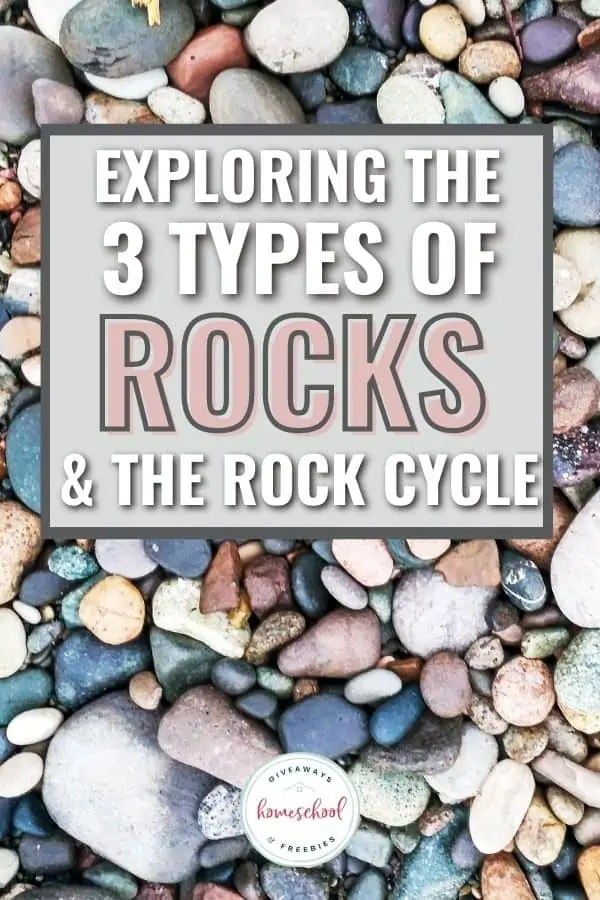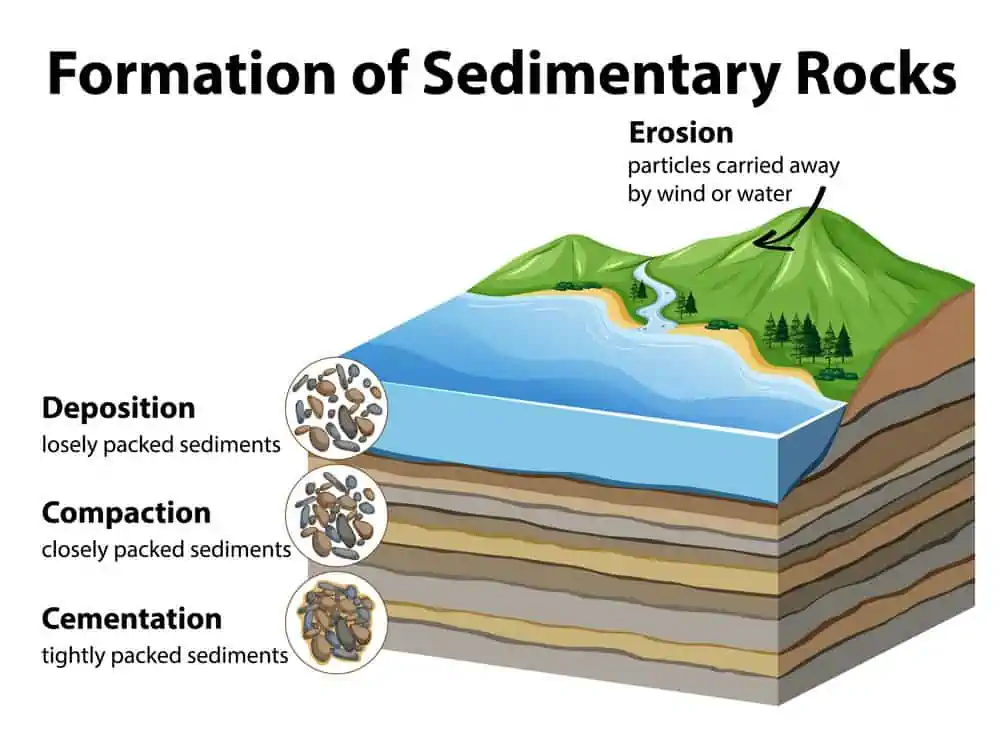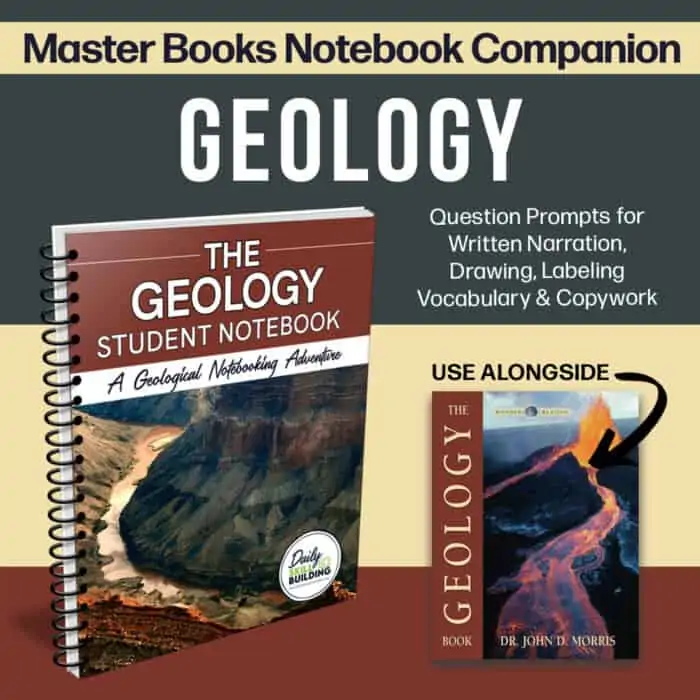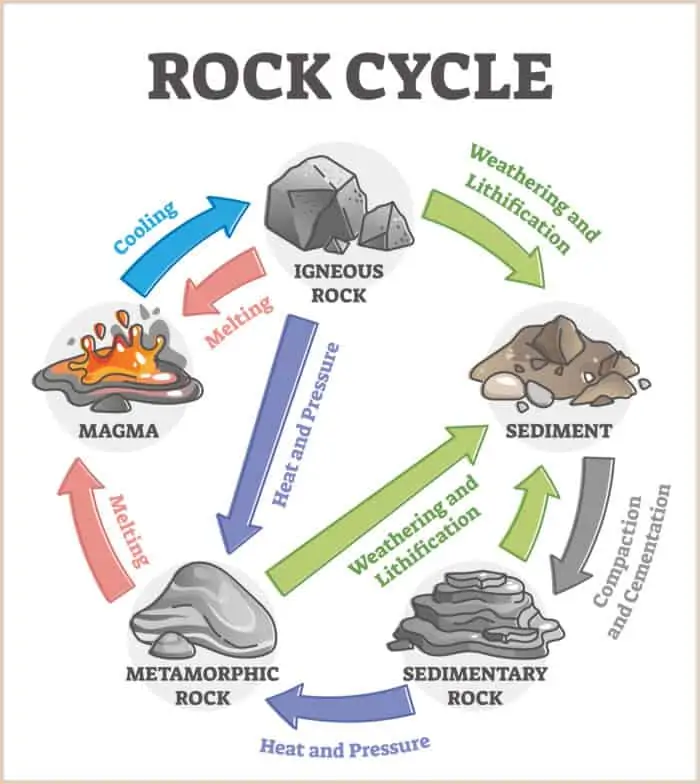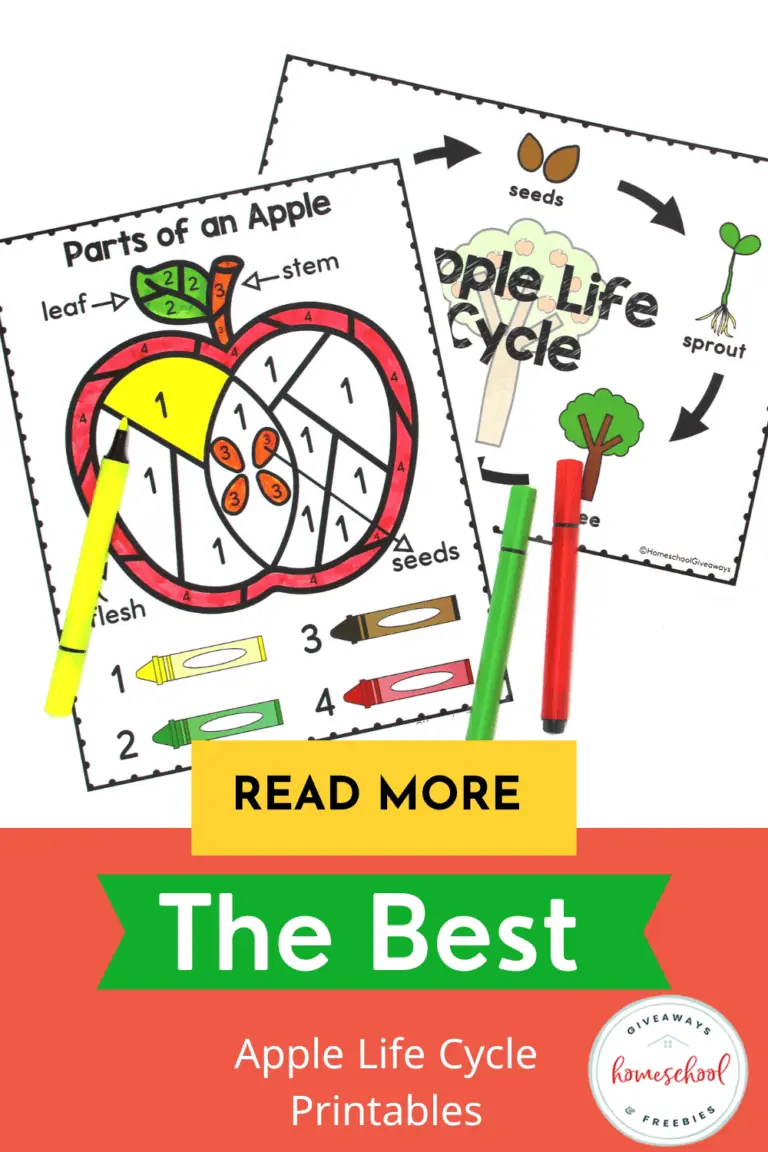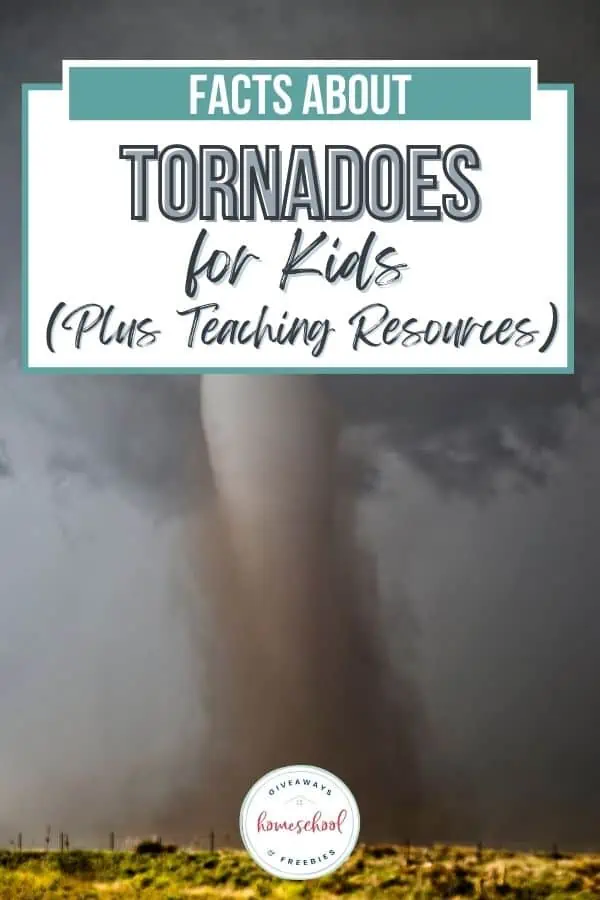Exploring The 3 Types of Rocks & The Rock Cycle
Published:
August 2, 2022

Contributor:
Sarah Shelton
Disclosure: This post may contain affiliate links, meaning if you decide to make a purchase via my links, I may earn a commission at no additional cost to you. See my disclosure for more info.
Are you learning about rocks or geology in your science studies this year? Teach your kids about the 3 types of rocks and the rock cycle in a fun and engaging way.
3 Types of Rocks
When you are studying about rocks and learning geology facts, there sure is a lot to learn and explore. Kids love to search for rocks and pick them up. Children are fascinated by rocks.
Have you ever done the laundry of a very curious child that loves to play outdoors? I guarantee you have had to spend time picking rocks out of their pockets before putting clothes into the washing machine.
If your kids love picking up and saving rocks when they are on nature walks, they may even want to keep them in a nature box or start a rock collection. If your children are excited about finding rocks this is a great time to teach them about the different types.
There are many different types of rocks that you can learn about in your studies. Many rocks will fall under the 3 major rock types.
3 Types of Rocks PDF DownloadThis free printable 3 types of rocks unit will be great for your kids to remember the differences of the different rock types. Be sure to scroll to the bottom of this post to get access. |
What Are the 3 Types of Rocks?
The 3 major types of rocks are: sedimentary rocks, metamorphic rocks and igneous rocks. These types are important to teach your children as the different types of rocks fall into these main rock types.
Sedimentary Rocks
Sedimentary rocks are the best types of rocks to search for fossils in. They are formed on or very close to the Earth’s surface. These rocks are formed by layers of sand which is called sediment. It is like a type of cement that is created by the wind, water, sand, silt, plants and dead animals.
Inorganic Sedimentary Rocks
Inorganic sedimentary rocks are formed when minerals precipitate due to water evaporation that create salts which form the rocks. Most of them are made from broken up pieces of other rocks. These types of rocks are formed closer to land. The most common type of inorganic sedimentary rocks is sandstone.
Organic Sedimentary Rocks
Organic sedimentary rocks contain large amounts of organic molecules. They form from the accumulation of animal and plant debris. Since the molecules from the organic debris contain carbon they form carbon-hydrogen bonds to form these rocks.
These rocks are more commonly found offshore and the most common organic sedimentary rocks are coal.
Examples of Sedimentary Rocks
Some examples of types of sedimentary rocks would be: sandstone, shale, shelly limestone, banded iron, anthracite, chalk, coal, and glacial conglomerate.
Metamorphic Rocks
Metamorphic rocks are rocks that started off as another type of rock. They could have been sedimentary or igneous, then they go through metamorphic processes to turn into their new metamorphic state.
Metamorphic rocks are created when rocks are subjected to high pressure and high heat, or hot mineral rich fluids. The intense heat does not actually melt the rocks, but transforms them from their original state.
There are two types of metamorphisms that can occur with rocks. These are: contact metamorphism and regional metamorphism.
Contact Metamorphic Rocks
Contact Metamorphic rocks are caused by thermal metamorphism. This is when the the magma changes the broken rocks that are near the surface of the earth. Contact metamorphism is the state of changing. This is the cooling process where the rocks begin to change from the magma cooling down.
Regional Metamorphic Rocks
Regional Metamorphic rocks go through another state of changing. This changing occurs deep down in the Earth of magma chambers. These rocks are usually created when the tectonic plates under the Earth begin to shift and move.
Examples of Metamorphic Rocks
Examples of common metamorphic rocks are: slate, schist, quartz, jadeite, marble, eclogite, garnet amphibolite, deformed conglomerate, gneiss and sphalerite ore rock.
Recommended Resource: The Geology Student NotebookThis geology notebook is a great resource to use when you are studying about rocks and fossils for earth science. We also have The Fossils Student Notebook and The Minerals Student Notebook. |
Igneous Rocks
Igneous rock forms are created when hot, molten material crystallizes and solidifies. The rocks melt deep inside of the Earth near hot spots of active plates. A good way to remember what types of igneous rocks are is by knowing that the name originates from the Latin word for fire.
Intrusive Igneous Rocks
Intrusive Igneous rocks are rocks that are formed from inside of the earth. These are created when hot magma is trapped inside and doesn’t erupt. It takes a long period of time to slowly cool off until it turns into a large rock.
A common example of a very large intrusive igneous rock would be granite rocks. Granite is a type of rock which many people make countertops out of. When you look at a piece of granite you can see the small crystals that are trapped inside of it.
Extrusive Igneous Rocks
Extrusive Igneous rocks are formed on top of the Earth’s crust. These are volcanic rocks that form at the top of volcanic eruptions. When the molten rock erupts on the surface the magma cools almost instantly from the temperature in the air.
This fast cooling of magma means that mineral crystals don’t have time to grow so they are very glassy textured rocks. An example of this glassy type of rock is the dark obsidian rock.
Examples of Igneous Rocks
Examples of igneous rocks are: diorite, granite, pegmatite, pumice, obsidian, tuff and rhyolite.
The Rock Cycle
The rock cycle is the process of how rocks change from one kind to another. Each of the 3 types of rocks have the ability to change into another type by what they are exposed to in the elements. This can happen in no specific order and rocks are constantly changing and shifting since the Earth has many processes that can change rocks.
Wind and water creates sediment from different kinds of rocks and other organisms. The tectonic plates inside the Earth are constantly shifting which also can change and create new rocks. The heat from the shifting melts and changes which results in creating completely new types of rocks.
Six Stages of the Rock Cycle
- Weathering and Erosion
- Transportation
- Deposition
- Compaction
- Metamorphism
- Rock Melting
How Rocks Are Formed
A rock is a solid that is made from different minerals. Rocks are are not created by any specific scientific formula, but by the natural world around them.
Rocks are formed by natural physical changes in the rock cycle that happen over long periods of time. The physical changes that can create rocks are caused by natural processes such as: high temperatures that cause melting, cooling temperatures, compacting and erosion.
The weather greatly effects how rocks change. Wind, water and sand blowing over rocks for a long period of time smooths them down. This event can change rocks into gemstones because the hard surface gets smoothed over time. It changes the entire appearance and quality of the original rock.
It is so amazing to think that a simple rock found outside could turn into a valuable gem over time.
You may also be interested in:
|
Types of Rocks Worksheet Printable
This 3 types of rocks printable is perfect for geology notebooks. Students will have a reference sheet for each of the 3 types of rocks: metamorphic rocks, igneous rocks, and sedimentary rocks. Plus, there is a rock sorting activity and a rock notebook page and a rock report template.
In Conclusion:
Learning about rocks is such a fascinating thing. Since the weather and the Earth is always changing and moving, new rocks are being changed and formed. After learning about rocks, your children may want to start their very own rock collection. They may even want to try to change their own rocks by using a rock tumbler or polisher at home.

